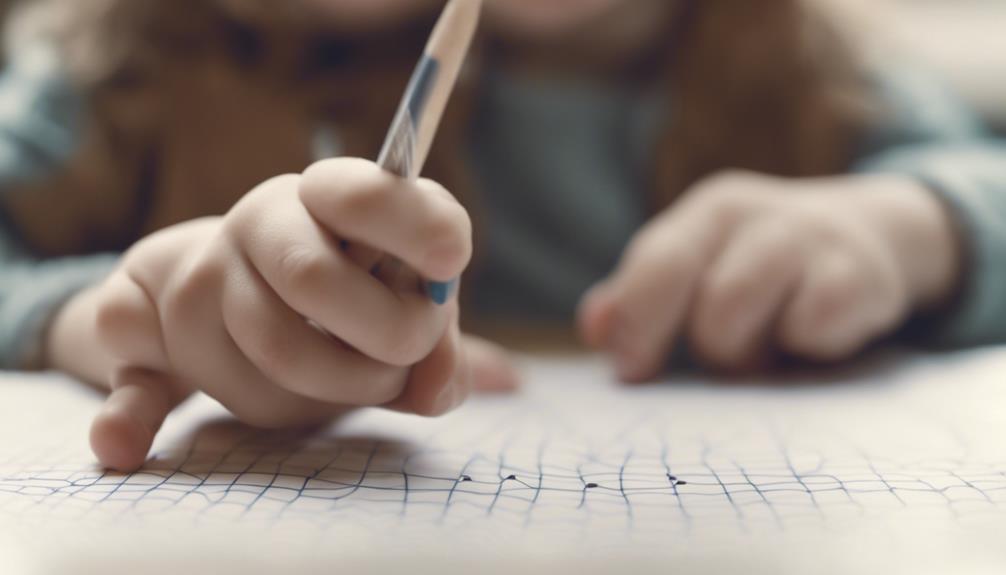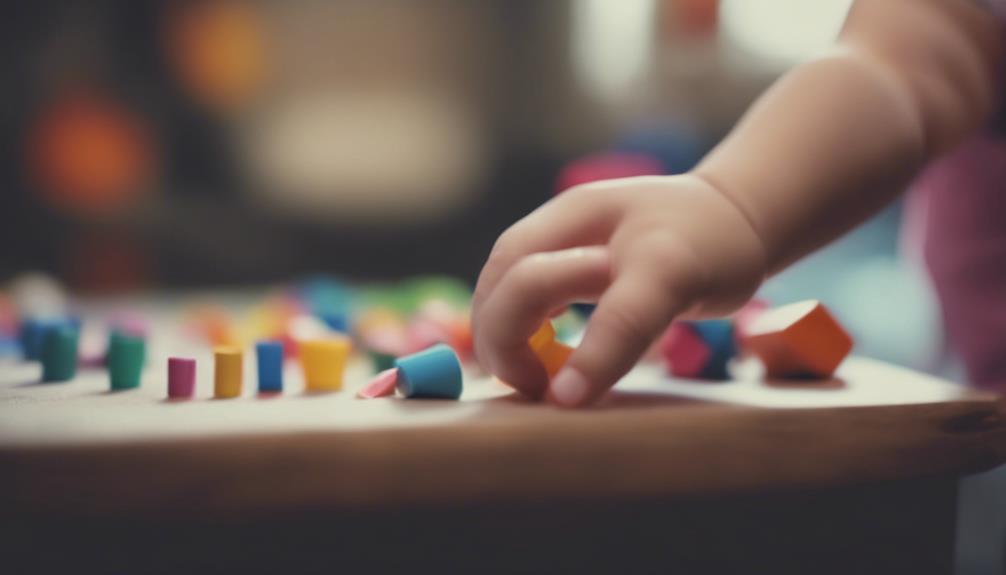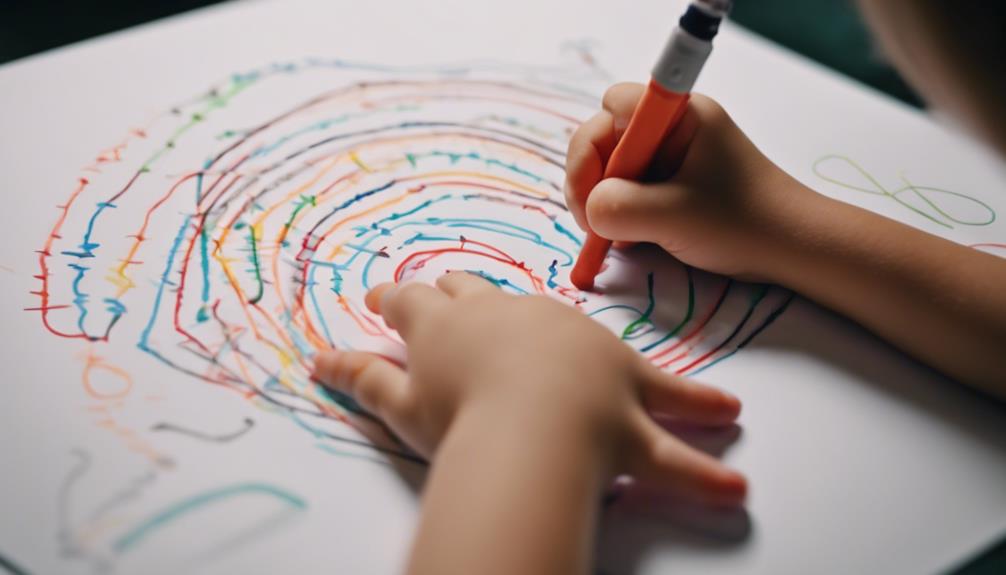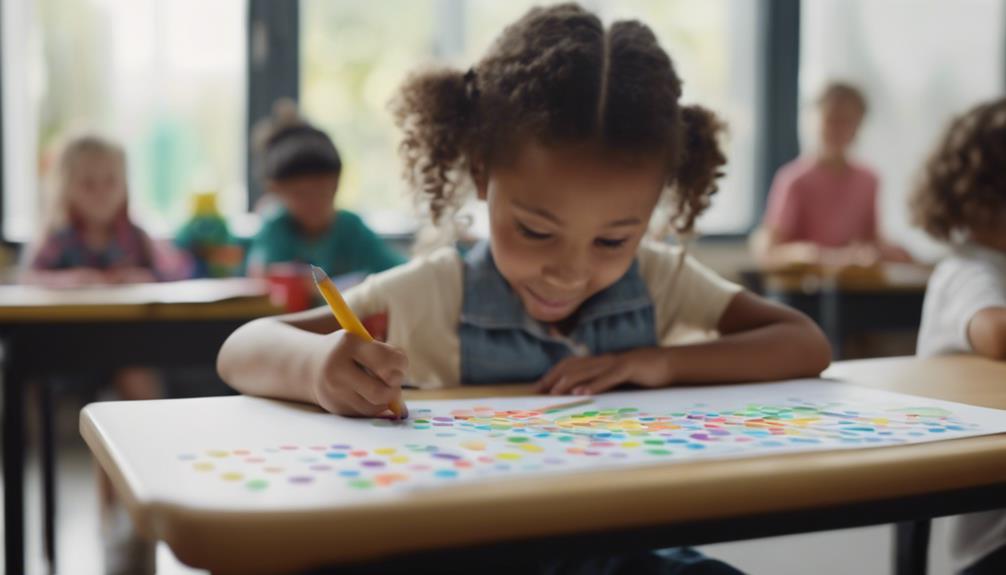If you want your child's hand lining skills to shine like a well-tuned orchestra, mastering a few key techniques is essential. Imagine these techniques as building blocks, each one laying a solid foundation for future abilities.
By incorporating fun and engaging activities into your child's routine, you can help them hone their fine motor skills and hand-eye coordination in a way that feels more like play than practice.
So, are you ready to discover the secrets to unleashing your child's full hand lining potential?
Key Takeaways
- Mastering hand lining skills aids in academic success and daily tasks.
- Developing fine motor skills enables precise manipulation of objects.
- Occupational therapists assist in improving hand lining abilities for kids.
- Enhancing skills boosts independence, confidence, and overall fine motor control.
Importance of Hand Lining for Kids

Developing strong hand lining skills in children is essential for their academic success and everyday tasks. These skills, critical for fine motor development, enable children to manipulate small objects with precision. Occupational therapists often work with children to improve their hand lining abilities, allowing them to perform tasks like writing neatly and using utensils effectively.
Children with well-developed hand lining skills can easily adjust their pencil grip, cut paper accurately, and handle small items effortlessly. Engaging in fine motor activities that enhance hand lining skills can lead to increased independence and confidence in performing intricate tasks like fastening buttons or zippers.
Mastering hand lining skills empowers children to excel in various fine motor activities, fostering success and self-assurance.
Developmental Stages of Hand Lining

Enter on a journey through the developmental stages of hand lining, where children's motor skills evolve from basic movements to intricate manipulations involving fingers, thumb, and palm. As they progress through the developmental stages, their fine motor control and in-hand manipulation skills improve, enhancing object control and coordination. Here is a breakdown of the stages:
- Mastering Translation (12-15 months): Children begin by mastering translation, which involves linear movement.
- Developing Rotation and Shift Skills (2-3 years): At this stage, children start developing rotation (circular movement) and shift (linear motion improvement) skills.
- Continual Refinement (Up to age 10): These skills continue to refine, aiding in daily tasks like writing neatly and using utensils effectively.
Enter on this exciting journey of mastering hand lining skills and watch your small muscles develop with precision and control!
Early Hand Lining Skills for Toddlers

Begin on a colorful journey as toddlers start to explore and master early hand lining skills through engaging activities like drawing lines and shapes. Toddlers are at a critical stage of early development, where practicing hand lining skills can greatly enhance their fine motor skills and hand-eye coordination.
Encouraging toddlers to participate in tracing activities and finger painting not only sparks creativity but also aids in the development of basic hand movements like straight and curvy lines. These activities play an important role in preparing toddlers for future handwriting tasks and improving their overall motor skills.
Advancing Hand Lining Skills for Preschoolers

Begin on an exciting journey to enhance preschoolers' hand lining skills through engaging activities and creative challenges. Developing motor skills and fine motor skills in preschoolers is essential for their overall development.
Here are some techniques to advance hand lining abilities in preschoolers:
- Tracing Shapes: Encourage preschoolers to trace various shapes and patterns to improve precision and control.
- Connecting Dots: Engage children in connecting dots to enhance hand-eye coordination.
- Using Different Mediums: Provide markers, crayons, and pencils for a diverse sensory experience.
- Increasing Complexity: Gradually increase the complexity of tracing tasks to challenge preschoolers and refine their hand lining skills effectively.
With these activities, preschoolers can enjoy learning while honing their hand lining abilities.
Encouraging Hand Lining in School-age Children

Get ready to inspire and enhance hand lining skills in school-age children through interactive and engaging activities that promote fine motor skill development. Encouraging hand lining can greatly improve fine motor skills, hand-eye coordination, pencil grasp, control, and precision.
By incorporating activities like tracing shapes, connecting dots, and following paths, children can develop these essential skills while having fun with educational games. Through regular practice, kids can refine their hand movements, leading to better handwriting and overall fine motor skill enhancement.
Make learning exciting by integrating hand lining into daily tasks and playtime, ensuring that children have the opportunity to strengthen their abilities in a creative and enjoyable manner.
Conclusion
You've got this! Keep practicing those hand lining skills with fun activities and games. Watching your fine motor skills improve will be so rewarding.
Remember, every little task you do helps build those essential abilities for everyday tasks. Keep up the great work!
👨👩👧👦 Dwight’s a married dad of 4 who loves to cast a line 🎣 into both fresh and salt waters. His heart belongs to his family and the sea. 🌊 #FamilyMan #FishingLife #DadOf4 🐟✨

